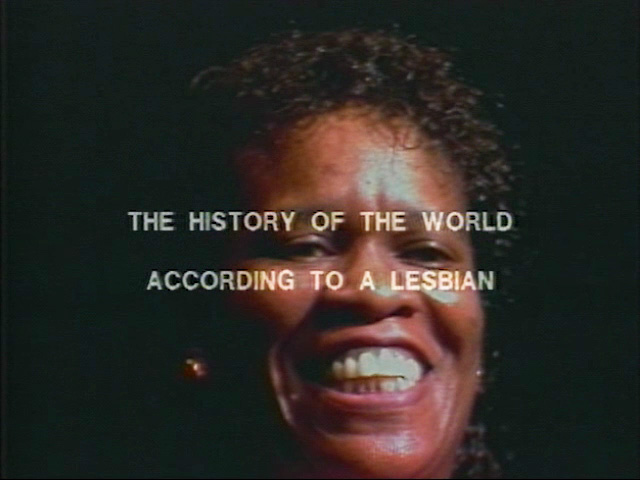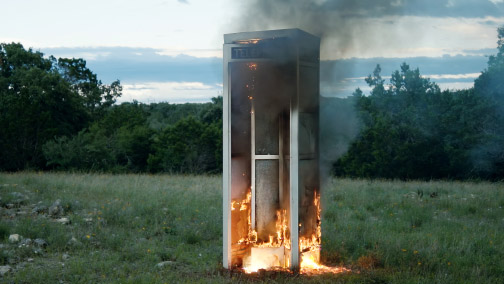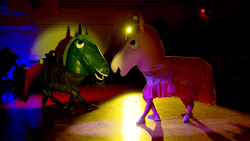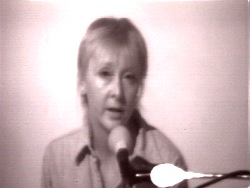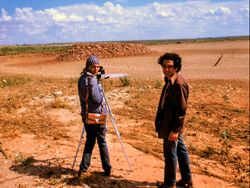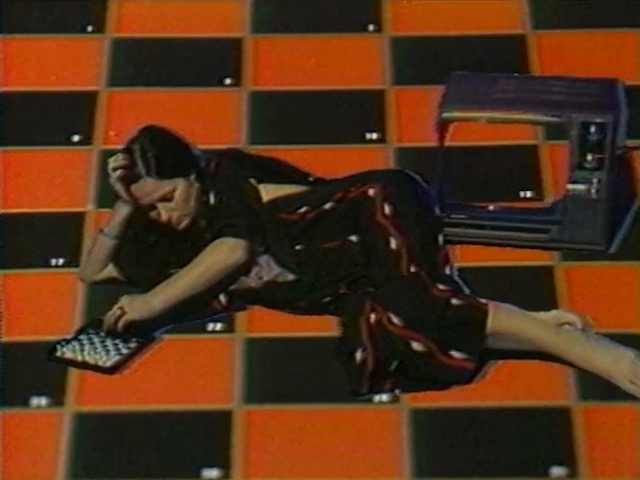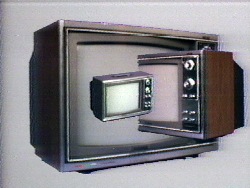Search Results
Search Results
Title Results
Your search returned 627 Titles
In The Hitchcock Trilogy, Tajiri uses Bernard Hermann's evocative scores for Hitchcock's films to create a compelling series of deconstructive "meta-narratives." Collapsing these emblematic scores with her own texts, she creates a layered "hall of mirrors" of stories within stories, using the...
The Hollow Coin explores roles of authority in public space and the intersection of personal and historical narratives. The video combines documentary footage of New York City’s rapidly disappearing network of payphones with audio of a covertly recorded telephone exchange between an actor and an unknowing bystander.
In this music video, which operates as a meditation on contemporary Chinese history, Yau Ching combines found images and text to negotiate between idealism and propaganda and the hopes and disillusionment that they bring.
An evening of performance and music by Mike Kelley presented at the Judson Memorial Church in New York City in 2009. Including: The Judson Church Horse Dance and the Horse Dance of The False Virgin, and live performances of instrumental soundtrack music from Kelley's Day is Done, composed in collaboration with Scott Benzel. Plus the world premiere of The Offer (Extracurricular Activity Projective Reconstruction #33), a composition for 12 horns and vocalist.
Constance DeJong's writing is closely connected to performance. Here DeJong reads The Lucy Amarillo Stories, while a musician performs a Philip Glass composition on the harmonica. The two performers interact attentively, the musician emphasizing passages in DeJong's text with the intensity of Glass's score. The reading develops as an atmospheric telling of the story of a young woman who leads a lonely life in New York, truly living only when she dreams.
The Making of Amarillo Ramp is Nancy Holt's final film. The piece documents Holt, Richard Serra and Tony Shafrazi as they complete Robert Smithson's unfinished earthwork, Amarillo Ramp, in the months after his death in 1973. The 1973 still photography and video footage, which documents their completion of Amarillo Ramp according to Smithson's specifications, was edited by Holt in 2013.
The Making of the Rough and (Very) Incomplete Videodisk on the Life of Marcel Duchamp
Lynn Hershman Leeson
1984, 14:09 min, color, sound
This quasi-documentary about change and accident deconstructs the events that took place during the making of the videotape, which was originally intended to be an interactive videodisc. Featuring Jack Burnham, John Cage, Marcel Duchamp, Walter Hopps, Brian O’Doherty, Nam June Paik, Pierre...
Produced by WGBH-TV in Boston, the Medium is the Medium is one of the earliest and most prescient examples of the collaboration between public television and the emerging field of video art in the U.S. WGBH commissioned artists — Allan Kaprow, Nam June Paik, Otto Piene, James Seawright, Thomas Tadlock and Aldo Tambellini — to create original works for broadcast television. Their works explored the parameters of the new medium, from image processing and interactivity to video dance and sculpture.
Commissioned for the Goldsmiths Centre for Contemporary Art on the occasion of If UR Reading This It’s 2 Late: Vol. 1, Cokes’ first UK solo exhibition, The Morrissey Problem addresses the problematics of the titular frontman of The Smiths, adapting in full an essay by Joshua Surtees condemning...
